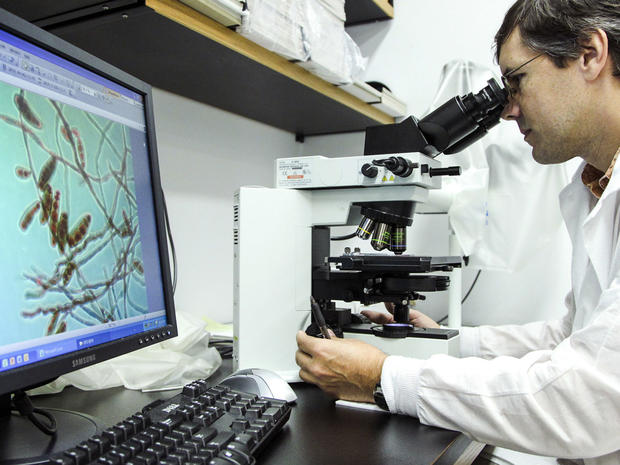2012 worst whooping cough year for US since 1955
The United States has just suffered its worst year for whooping cough in nearly six decades, according to preliminary figures from the Centers for Disease Control and Prevention.
Whooping cough, or pertussis, ebbs and flows in multi-year cycles, and experts say 2012 appears to have reached a peak with 41,880 cases. Another factor: A vaccine used since the 90s doesn't last as long as the old one.
The vaccine problem may continue to cause higher than normal case counts in the future, said Dr. Tom Clark of the CDC.
"I think the numbers are going to trend up," he said. The agency provided the latest figures on Friday.
Last year, cases were up in 48 states and outbreaks were particularly bad in Colorado, Minnesota, Washington state, Wisconsin and Vermont.
The good news: Despite the high number of illnesses, deaths didn't increase. Eighteen people died, including 15 infants younger than 1.
- CDC advises all pregnant women to get whooping cough vaccine
- Whooping cough vaccine found to wane in effectiveness after age 6
- Whooping cough outbreak: How to keep kids safe
Officials aren't sure why there weren't more deaths, but think that the attention paid to bad outbreaks across the nation resulted in infected children getting diagnosed faster and treated with antibiotics.
Also, a push last year to vaccinate pregnant women -- a measure designed to pass immunity to infants -- may have had some small measure of success, Clark said.
The CDC recommended in October 2012 that all pregnant women should receive a Tdap vaccine, which provides protection whooping cough, tetanus and diphtheria. The vaccine was determined to be safe for pregnant women, and can transfer disease-fighting antibodies to the fetus to help protect it against these diseases during infancy.
The final tally of whooping cough cases will be higher, Clark said, but unlikely to surpass the nearly 63,000 illnesses in 1955.
Whooping cough is a highly contagious disease that can strike people of any age but is most dangerous to children. Its name comes from the sound children make as they gasp for breath.
It used to be a common threat, with hundreds of thousands of cases annually. Cases gradually dropped after a vaccine was introduced in the 1940s.
For about 25 years, fewer than 5,000 cases were reported annually in the U.S. But case counts started to climb again in the 1990s although not every year. Numbers jumped to more than 27,000 in 2010, the year California saw an especially bad epidemic.
Experts looking for an explanation have increasingly looked at a new vaccine introduced in the 1990s, and concluded its protection is not as long-lasting as was previously thought.
In September, a study in the New England Journal of Medicine found protection from the DTaP vaccine weakened dramatically soon after youngsters got the last of five recommended doses at six years old.
DTaP is a five dose series recommended at two, four or six months; 15 through 18 months and ages 4 through 6 years. Another type of vaccine, Tdap, is a booster dose given to people 11 to 12 years old, pregnant women and any adult that has not previously had been vaccinated.
Health officials are considering recommending another booster shot, strengthening the vaccine or devising a brand new one.
